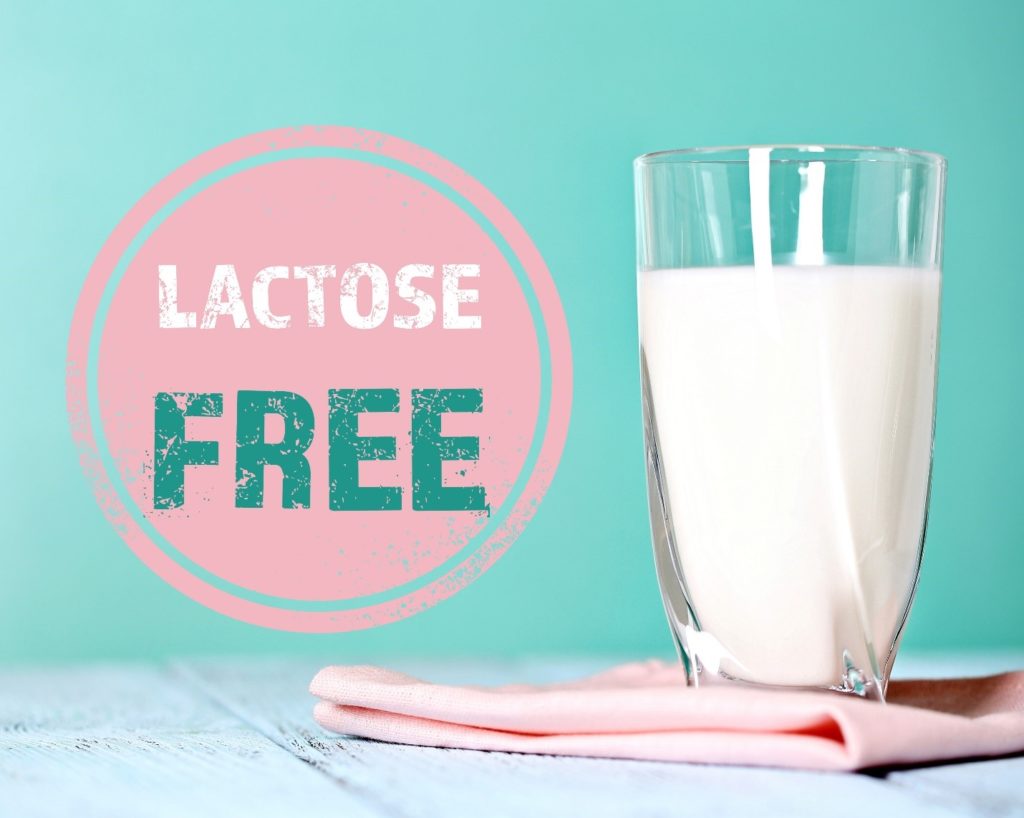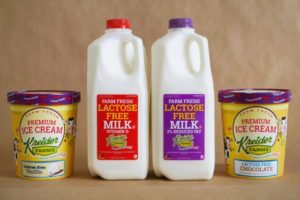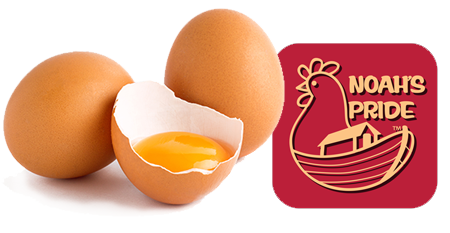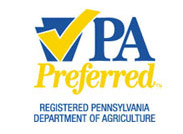
If eating most dairy foods or drinking cow’s milk causes you digestive pain and discomfort, you may be lactose intolerant. This unfortunate condition is common—up to 65% of people (and perhaps 75% of adults) lack the needed amount of lactase enzyme activity in the small intestine to break down lactose effectively.
Traditional dairy milk tends to be the biggest offender in causing intestinal upset for most with lactose intolerance, and this is especially troublesome for Americans since cow’s milk is such an important dietary staple in our culture. We love our dairy here at Kreider Farms, and we became determined to produce, nutritious, lactose free dairy that can be enjoyed by everyone. Among other factors, it’s true that the nutrition in milk and dairy is difficult to replace, and it’s considered by experts to be a necessary component of a balanced diet.
Fortunately, there are plenty of tactics for lactose intolerant individuals to try to feel better, centering on reducing dietary lactose as much as possible. This can be tricky, and living the lactose-free life can mean experimenting with your diet until you find a healthy eating plan that’s nutritionally complete, but that also doesn’t cause your digestive system to rebel against you.
Today’s post offers some of the best tips we’ve found for dealing with lactose intolerance, especially if you’ve just recently been diagnosed by your doctor and are new to the idea of removing lactose from your diet.
Understand your tolerance level
As unique individuals—even if we’re suffering from the same conditions, like lactose intolerance—we tend to experience symptoms in a range of different ways. And the foods that trigger discomfort or physical illness may also vary from person to person.
It’s true that some with lactose intolerance simply cannot enjoy regular milk, but yogurt and cheeses of various kinds don’t bother them. These folks often feel fine just by avoiding cow’s milk. Others may not need to totally cut any particular food—even traditional milk—from their diets if they only ingest small amounts since they have some lactase activity, just not enough. The point is that you must learn your particular tolerance levels and get familiar with how your lactose intolerance affects you.
Working with your doctor to determine whether the discomfort you experience from eating traditional dairy foods is due to lactose intolerance or a less-common dairy allergy is part of this process. (These different conditions do not have the same causes, though symptoms can sometimes be similar.) Once you’ve got a handle on how lactose affects your unique system, you can try several options to live better with lactose intolerance.
Unpopular option: avoid traditional dairy foods and beverages
This may sound like obvious advice—if you can’t eat dairy products due to lactose intolerance, don’t. However, completely cutting dairy from your diet can be extremely challenging, as well as nutritionally ill-advised. Anyone practicing a vegan lifestyle can attest to this.
The biggest problem is that lactose-containing dairy ingredients are in a lot of prepared foods that may not seem to be dairy-based, for instance. This hidden lactose can be the most difficult to tackle.
What foods typically contain lactose?
Fluid milk from dairy animals—cows, and even goats and sheep—contains lactose, of course. And foods made from milk, like ice cream, cheese, yogurt, sour cream, pudding, custard, and more will typically contain the highest levels of lactose unless they have been specially processed to drastically reduce it.
Beware of products with hidden lactose
While you may expect cream-based sauces and soups to contain lactose, you may not have considered that batter coatings, egg substitutes, and even some processed meats can contain the pesky sugar. Additionally, baked goods, some sugar substitutes (like Equal), salad dressings, and some flavorings on things like chips and crackers also have lactose in the finished products based on ingredients! You will need to make a habit of carefully reading food labels and asking lots of questions at restaurants to avoid lactose altogether.
Work with your lactose intolerance: try digestive enzymes
Some individuals with lactose intolerance find that they can fight back against their digestive discomfort by taking digestive enzyme supplements containing lactase. There are many of these products on the market today, and they work for some when taken before eating foods with problematic levels of lactose. Lactaid is one of the most popular brands that’s readily available over the counter. Always be sure to consult with your doctor before trying supplements of any kind.
Find suitable replacement products for traditional dairy
One of the best options for those who love dairy products, but can no longer enjoy them, is to find suitable replacements. This can involve a lot of trial and error, as some lactose-free products—like plant-based nut “milks”—don’t taste anything like real dairy foods and milk. However, with technological advancements in food and beverage processing, dairy replacements are more often now being made directly from dairy products!
 Find a good lactose-free milk
Find a good lactose-free milk
While many people believe that nut “milks” are the only way, these are often lacking in nutritional completeness. Some, such as almond milk, naturally lack protein—the nutrient most people expect from milk—while others don’t contain enough vitamin D, calcium, or other crucial elements for health.
Luckily, lactose-free milk that is actually made from real cow’s milk is now becoming more widely available. And Kreider Farms has been at the forefront of developing a delicious milk that’s lactose free!
Ideas for lactose-free breakfasts
As you begin your lactose-free journey, you’re probably most worried about what you can eat for breakfast. It’s true that American breakfast options tend to revolve around dairy products—cereal with milk, granola with yogurt, eggs with cheese—yet breakfast is supposed to be the most important meal of the day!
Here at Kreider Farms, in addition to our Lactose Free Milk, we can also help you out with delicious eggs, which can easily be prepared to be completely free of lactose. And you’ll also want to continue to follow along with us here on the blog for delectable lactose-free recipes to create breakfast treats (and more) like scrumptious blueberry muffins!
Don’t forget about lactose-free ice cream!
There’s one big thing that lactose-free dieters tend to miss the most—ice cream! As with milk, you’ll be happy to know that new options for lactose-free REAL ice cream continue to be brought to market. No longer do you have to settle for subpar “frozen desserts” if you’re cutting out lactose!
Want Farm Fresh Lactose Free Options? Try Kreider Farms Milk and Ice Cream!


 Find a good lactose-free milk
Find a good lactose-free milk


